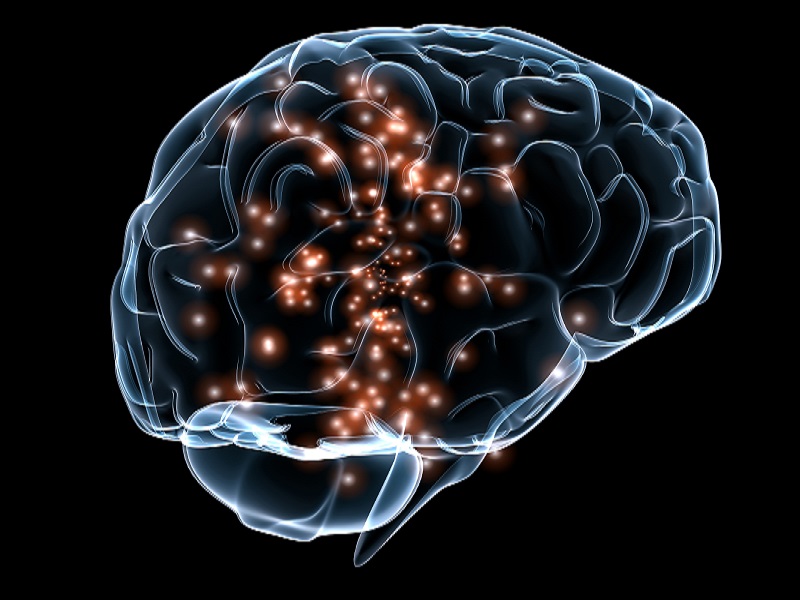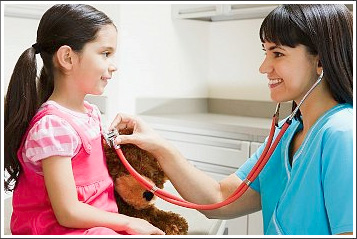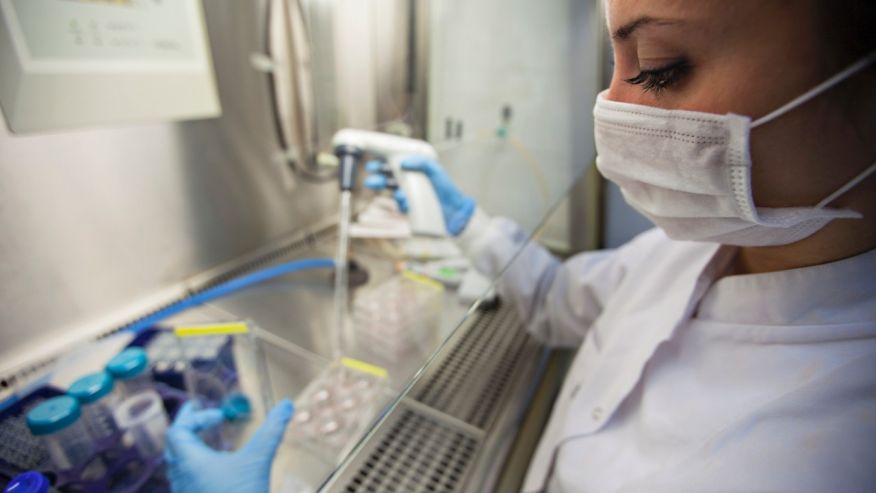
Billie Iverson may be getting up there, but for an 86-year-old, she’s still plenty active.
“I take trips, and I go do my own shopping, and I take myself to the doctor,” Iverson says. “I do everything. I don’t let anything stop me.”
But one day, she got hit with something she’d never experienced — the worst case of the runs ever.
For days at a time, off and on for weeks, the problem kept coming back. Iverson eventually got so weak, she ended up in for days at a time, off and on for weeks, the problem kept coming back. Iverson eventually got so weak; she ended up in a nursing home.
“I just thought maybe I wasn’t going to make it,” she says. “I thought I was going to die.”
Finally, Iverson’s daughter took her to see Colleen Kelly, a doctor at Brown University. Kelly knew right away what was going on.
“It’s very classic, this pattern,” Kelly says. “We’ve seen hundreds of cases over the last couple of years at our program.”
Kelly’s program specializes in the microbes that live in our digestive systems — trillions of bacteria, viruses, fungi and other mostly helpful microbes whose genes scientists collectively call the human microbiome .
The problem, she told Iverson, started when antibiotics prescribed for another health problem disrupted the community of benign organisms in her intestines, leaving her vulnerable to a really bad bug — a bacterium called Clostridium Difficile
“You can almost look at C. diff as … the prototypical example,” Kelly says, of how a disruption in the human microbiome can result in disease.
Kelly is among a growing number of doctors who are starting to use what scientists are learning about our microbiomes to help prevent, diagnose, and treat many illnesses. For Iverson, she proposed something that may sound pretty radical — what doctors call a fecal transplant
“It’s really almost like an organ transplant,” Kelly says. “You’re taking this whole community of microorganisms from one person, [and] transplanting them into another person. Then these things … take root, colonize and kind of restore that balance.”
Iverson says she initially found the idea repulsive. But she felt so desperate that she agreed to try it.
“I was scared to death, honey,” Iverson says. “I’m an old lady. I’ve got one foot in the grave and the other on the banana peel.”
The procedure turned out to be really easy. And it worked — virtually overnight. “It stopped,” Iverson says. “Right away. I’m feeling good now. I’m feeling great.”
What happened to Iverson is the most dramatic example of how doctors are manipulating the microbiome in lots of ways to help lots of different kinds of patients.
For one thing, Kelly says doctors are testing the use of the transplants in other illnesses, such as colitis, Crohn’s disease and diabetes. And there’s even talk of trying the treatment for obesity.
“We’re at a really interesting point in medicine where we’ve come to appreciate the microbiome and that [these organisms] have really integral roles in … energy metabolism, and immune function, and all of these other things,” Kelly says.
At the same time, researchers are looking for more subtle ways to fix our microbiomes. For starters, they’re trying to remove the “yuk” factor from microbiome transplants by figuring out exactly which microorganisms patients really need and giving them just those. And there’s tons of research involving so-called probiotics — live cultures of supposedly beneficial microbes, typically included in yogurt or other foods or supplements probiotics are meant to be swallowed, in hopes that they’ll outcompete pathogenic bacteria and restore a healthy balance.
The evidence is really mounting to the point where I think it’s undeniable that the ingestion of live bacteria — safe bacteria in high numbers — has an overall beneficial effect on human health,” says colin hill of the University College Cork in Ireland.
Scientists are testing a long list of probiotics for a variety of health problems, including vaginal infections, colic in babies and weakened immune systems in the elderly. They’re also studying so-called prebiotics— non digestible carbohydrates meant as food for the good microbes.
Now, anyone who walks into a grocery store these days knows that hundreds of prebiotic and probiotic products are already on the market. You can’t watch TV or go on the Internet without hearing the kinds of claims the manufacturers of these products make.
The companies point to studies supporting their claims. But many experts say there are still huge questions about how safe such products are, how pure they are, and whether they really do what their makers say they do.
“All of those things together open up the opportunity for … the equivalent of snake oil salesmen related to probiotics or microbial treatments, or fecal transplants or whatever,” says Jonathan Eisen of the University of California, Davis.
And Eisen is not alone in his criticism. The Food and Drug Administration has big concerns. Those concerns include whether microbiome transplants might spread infections, or are being promoted for unproven uses, or whether they might actually increase the risk for some health problems.
“The gut microbiome can affect obesity, diabetes [and] a number of other disorders,” says Jay Slater, director of the FDA’s Division of Bacterial, Parasitic and Allergenic Products. “These are the kinds of concerns that would indicate that good long-term studies really should be done.”
So the FDA requires that doctors who want to do microbiome transplants for anything other than C-diff treatment get FDA approval first. And physicians must warn patients that, even for C-diff, the treatment is still experimental. Scientists studying probiotics have to put them through the same careful testing that regular drugs go through.
All this is really frustrating for many scientists. They argue that these regulatory roadblocks are holding up research and making it too hard for patients to get microbiome transplants.
“People are dying of C. diff,” says Kelly. “And people are living in this really terrible state. I see people who’ve lost their jobs, people who’ve become depressed because of just the feeling of utter hopelessness. And I think it’s really unethical to withhold the treatment from patients who need it.”
As for Iverson, she agrees that anyone who needs such a transplant should be able to get one.
“I think it’s terrific,” she says. “I think it’s the best thing that ever happened. This is like a step to heaven having this done.”
Copper and copper alloys can rapidly destroy norovirus – the highly- infectious sickness bug, scientists have discovered.










 Cinnamon, a common kitchen spice, may improve blood sugar levels for patients with type 2 diabetes, new research has found.
Cinnamon, a common kitchen spice, may improve blood sugar levels for patients with type 2 diabetes, new research has found.
 Researchers have suggested that the cell transplants could be used to treat schizophrenia.
Researchers have suggested that the cell transplants could be used to treat schizophrenia.